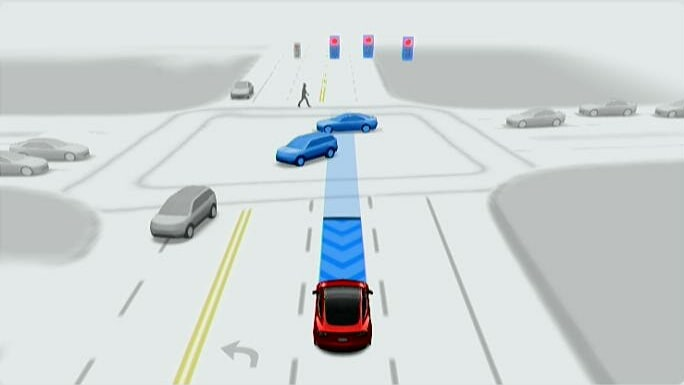In a world where technology evolves at lightning speed, Tesla remains at the forefront of innovation, continuously pushing the boundaries of what’s possible in the automotive industry. As of 2023, Tesla’s Full Self-Driving (FSD) update is making headlines, promising to redefine what we expect from autonomous driving. With over 3 million Tesla vehicles on the road globally, this update represents a significant leap forward in the quest for fully autonomous vehicles, a dream that has long fascinated both tech enthusiasts and environmental advocates alike.
In this article, we’ll explore how Tesla’s latest FSD update is transforming autonomous driving, delve into the technology behind it, and assess its implications for the future of transportation.
Tesla’s FSD Update: A Technological Leap Forward
The 2023 FSD update introduces several groundbreaking features that set it apart from previous iterations. At the core of this update are enhancements in Tesla’s neural network, machine learning algorithms, and real-time data processing capabilities. These advancements allow Tesla vehicles to navigate complex urban environments with increased precision and safety.
Key Features of the 2023 FSD Update
- Enhanced Neural Networks: Tesla’s neural networks have become more sophisticated, enabling the FSD system to process a staggering amount of data from eight cameras, ultrasonic sensors, and radar. This data is used to create a comprehensive understanding of the vehicle’s surroundings, allowing for more accurate decision-making.
-
Improved Vision Processing: The update includes enhancements in vision processing, allowing Teslas to better recognize and respond to obstacles, traffic signals, and pedestrians. This improvement is crucial for navigating busy city streets.
-
Expanded Autopilot Features: The FSD update incorporates features such as automatic lane changes, highway entry and exit, and self-parking, making the driving experience more seamless and less stressful for users.
-
Smart Summon: With Smart Summon, Tesla owners can now summon their cars from across parking lots, a feature that combines convenience with a touch of futuristic flair.
The Impact of Tesla’s FSD on the Autonomous Driving Landscape
Tesla’s FSD update is not just a technological marvel; it’s a catalyst for change in the autonomous driving landscape. Here’s how:
1. Accelerating the Adoption of Autonomous Vehicles
Tesla’s commitment to continuous improvement and software updates means that more consumers are willing to embrace autonomous driving technology. According to a recent survey by Reuters Mobility, 60% of Tesla owners have expressed increased trust in FSD technology due to these regular updates and improvements.
2. Setting Industry Standards
As Tesla pushes the envelope, other automakers are forced to keep pace. Rivian, Lucid Motors, and traditional giants like Volkswagen and Ford are investing heavily in their autonomous driving technologies, spurred by Tesla’s advancements.
3. Regulatory Considerations
Tesla’s FSD update also raises important questions about regulation. Governments worldwide are grappling with how to safely integrate autonomous vehicles into existing traffic systems. Tesla’s advancements serve as a benchmark for policymakers striving to create frameworks that promote innovation while ensuring safety.
Practical Tips for Tesla Owners
With the FSD update rolling out, here are some practical tips for Tesla owners to maximize their autonomous driving experience:
- Stay Informed: Keep up-to-date with software updates and enhancements by regularly checking Tesla’s official channels and forums like Electrek and InsideEVs.
-
Understand the Limitations: While FSD represents a significant leap forward, it’s important to remember that it is not a fully autonomous system. Drivers should remain attentive and ready to take control when necessary.
-
Participate in the Beta Program: If you’re eager to experience the latest features, consider enrolling in Tesla’s FSD Beta program, which allows users to test new capabilities ahead of the general public.
-
Leverage Tesla’s Supercharger Network: With an extensive charging infrastructure, Tesla owners can take advantage of the Supercharger network for efficient long-distance travel.
The Future of Autonomous Driving: What’s Next?
As we look to the future, Tesla’s FSD update signals a shift towards a more autonomous future. With advancements in AI and machine learning, it’s conceivable that fully autonomous vehicles could become a reality within the next decade. This transformation could lead to increased road safety, reduced traffic congestion, and significant environmental benefits due to optimized driving efficiency.
Moreover, as other automakers like Hyundai, BYD, and Nissan ramp up their autonomous driving initiatives, we can expect a more competitive landscape that will accelerate innovation and drive down costs, making autonomous vehicles accessible to a broader audience.
Conclusion
Tesla’s FSD update in 2023 is more than just a software upgrade; it’s a bold step toward a future where autonomous driving is the norm rather than the exception. By enhancing the capabilities of its vehicles and setting new industry standards, Tesla continues to inspire confidence and enthusiasm in the realm of self-driving cars.
As we stand on the brink of what could be the most significant evolution in transportation history, the question remains: How will society adapt to this new era of mobility? Share your thoughts in the comments below, and let’s explore this exciting future together.
Looking ahead, it’s clear that Tesla’s innovations will not only shape the company’s trajectory but also influence the entire automotive industry’s approach to autonomy, safety, and sustainability. Stay tuned for what’s next, as the journey toward fully autonomous driving pushes forward into uncharted territories.

